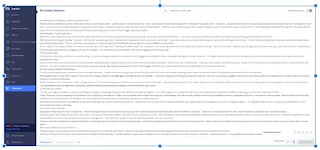How Education is Changing in 2025: Key Global Trends
Nobody could've predicted just how drastically schools would change by 2025. Looking back, it seems obvious now - when was the last thing that technology didn't completely flip upside down? My cousin Jake got hooked on some live casino app last summer and hasn't set foot in a real poker room since. He just sits there, playing blackjack in his pajamas at weird hours. Education's gone through that same kind of transformation. Kids these days barely recognize the concept of "going to school" the way their parents understood it. From kindergarten through PhD programs, the whole system's been rebuilt from the ground up, with physical classrooms becoming just one piece of a much bigger learning ecosystem.
Hybrid Models That Actually Work
Remember when "hybrid learning" meant terrible video calls where half the class couldn't hear what was happening? Those days are thankfully behind us. The clunky experiments of the early 2020s have evolved into something genuinely functional by 2025.
Most schools have stopped treating "in-person" and "remote" as opposing forces. Instead, they've figured out what works best in each mode. Group discussions, lab work, and certain types of assessment still happen face-to-face. Content delivery, certain types of practice, and personalized review have shifted largely online. This isn't just about convenience - it's about recognizing that different learning objectives require different environments.
Karen, a high school physics teacher from Denver, describes her current approach: "Mondays and Wednesdays, we're together in the lab doing experiments and collaborative problem-solving. The rest of the week, students work through material at their own pace, and I meet with them individually or in small groups based on who's struggling with specific concepts. It's not perfect, but it's miles better than how we taught even three years ago."
The Money Problem
Despite technological advances, many districts still struggle with outdated facilities, inadequate staffing, and limited resources. The digital divide persists, with access to high-speed internet and suitable devices remaining uneven across socioeconomic lines.
Several states have experimented with new funding models, abandoning the traditional property tax approach that perpetuated inequalities. Results have been mixed at best. Corporate partnerships have filled some gaps, though these arrangements raise legitimate questions about influence and priorities. The harsh reality is that while some schools showcase cutting-edge educational approaches, others still struggle with basics like reliable internet connections and sufficient instructional materials.
AI That Supports Rather Than Replaces
The fear that AI would replace teachers has proven mostly unfounded. Instead, AI has increasingly taken on the role of personalized tutor and assistant, handling routine aspects of education while freeing human educators for more nuanced work.
Most students now interact with AI systems that track their progress, identify knowledge gaps, and adapt content accordingly. These aren't just glorified multiple-choice quiz machines - they can review essays, suggest improvements to projects, and even recognize when a student seems to be losing interest or struggling emotionally.
Professor Williams from Columbia's Teacher College observes, "The best AI tutoring systems don't try to replace the human connection. They handle the repetitive stuff - explaining the same concept fifteen different ways until it clicks, providing endless practice problems with immediate feedback. This lets teachers focus on inspiration, mentorship, and the complex human aspects of education that machines still can't touch."
Credentials Get Specific
The four-year degree monopoly continues crumbling as employers increasingly value demonstrated skills over general degrees. This shift has given rise to targeted credentials that validate specific competencies without requiring years of study or mountains of debt.
Frank Thompson, hiring manager at a mid-sized tech firm, explains his perspective: "When I see a candidate with a traditional computer science degree, that tells me they probably have broad knowledge but doesn't guarantee proficiency in the specific areas we need. When someone shows up with credentials in cloud architecture, API development, and cybersecurity fundamentals, I know exactly what they can do from day one."
Educational institutions have responded by breaking their offerings into smaller, stackable components. Students can now mix and match credentials based on career goals rather than accepting one-size-fits-all degree programs. This approach reduces time to employment and allows for more personalized educational pathways.
Classrooms Without Borders
Geography matters less than ever in education. Virtual exchange programs have become commonplace, with students regularly collaborating with peers from different countries. These aren't just cultural tourism - they involve substantive academic work on shared projects.
One tenth-grader described her experience: "Our class in Toronto partnered with students in Nairobi to study urban water systems. We collected local data, compared challenges, and developed proposals that addressed both contexts. It wasn't just about the science - we had to navigate time zones, cultural differences, and varied perspectives on resource management. That stuff never would've come up if we'd stayed within our own classroom."
These cross-border collaborations prepare students for increasingly global workplaces while providing authentic contexts for developing communication skills and cultural awareness.
Brain Science Meets Classroom Practice
Schools increasingly implement approaches aligned with how the brain actually learns and remembers information.
Spaced repetition systems ensure students revisit concepts at optimal intervals for long-term retention. Interleaved practice - mixing different but related concepts within learning sessions - has replaced the traditional blocked approach of exhausting one topic before moving to the next.
These aren't just theoretical improvements. Teachers report higher retention rates, better transfer of knowledge between contexts, and improved student engagement. The shift requires initial investment in curriculum redesign and teacher training, but the payoff in learning outcomes has justified the effort for many institutions.


